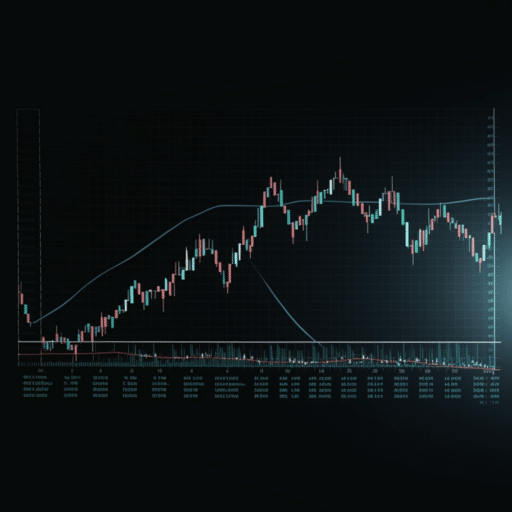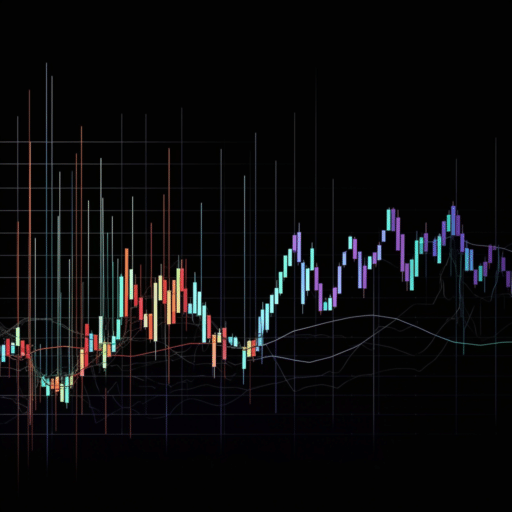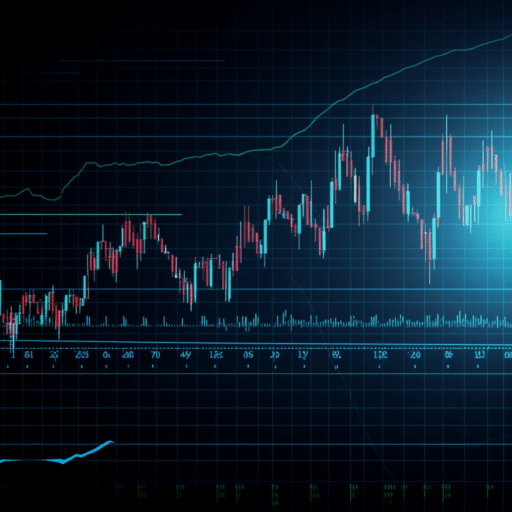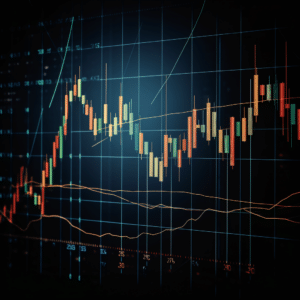The best defensive ETFs are great for investors who want to be safe now that Treasury yields are at their highest level in almost 20 years and stocks are falling.
Major factors contributing to the current situation of the markets include high inflation, the Federal Reserve’s firm implementation of monetary policy, and ongoing worries about the wars in Russia-Ukraine and Israel-Palestine.
Constant cost pressures, rising interest rates, and international tension have all contributed to a climate of heightened market volatility.
Disruptions in the financial markets have been blamed on fears of a global economic recession in recent months.
Making sure one’s investments are well-positioned to weather prolonged market volatility is, then, of paramount importance.
One method involves taking a look at some of the most popular inexpensive ETFs, such as defensive ETFs that have performed well in the past.
These ETFs often diversify their holdings among industries that have historically shown strong resilience during market downturns.
If you want to invest as an expat or high-net-worth individual, you can email me (advice@adamfayed.com) or use these contact options.
What are Defensive ETFs
Defensive ETFs are a type of investment vehicle that can take the form of both traditional mutual funds and ETFs.
Defensive ETFs invest the majority of their assets, or all of their assets, in the shares of companies that have a track record of being stable throughout the course of the business cycle.
Nonetheless, cyclical businesses are particularly susceptible to the ups and downs of the economy. When customers have less discretionary cash, they tend to put off banking, shopping at high-end stores, and other purchases.

The healthcare industry is a good example of a non-cyclical sector because it often experiences steady profitability regardless of the state of the economy is in.
The products and services that are provided by these companies will always be in demand among customers, regardless of the state of the market or the economy.
A defensive sector fund could invest its money in sectors that are reliable and stable, such as the food and healthcare industries or the utility sector.
You can find “defensive” stocks in a wide variety of industries if the company in issue has consistent earnings, market-leading products, strong pricing power, and a track record of continuously shaking things up.
How Defensive ETFs Work
When investors perceive indications of an impending economic downturn, a considerable number of them opt to enhance the resilience of their investment portfolios by allocating assets into defensive sector funds.
This enables them to outperform the general market in times of market correction or bearish market conditions.
A market correction is characterized as a decline in the market ranging from 10% to 20%. A bear market is characterized by a significant decrease of at least 20% in the value of a financial market, sometimes accompanied by an economic downturn known as a recession.
The primary objective of investing in defensive sector funds is to mitigate the impact of substantial declines in share prices that may arise during such occurrences.
During periods of economic hardship, individuals tend to curtail their expenditures on non-essential goods and services, including but not limited to entertainment, travel, and upscale apparel.
Individuals exhibit a tendency to prioritize the acquisition of essential items, such as sustenance, healthcare provisions, and fundamental utilities.
By investing in defensive stock funds that are focused on industries such as these, it is theoretically expected that the value of your holdings will see a comparatively smaller fall in comparison to other investments.
This is due to the fact that the assets comprising your fund consist of stocks that have demonstrated a historical tendency to maintain stability in value notwithstanding market downturns.
Types of Defensive ETFs
Consumer Staples ETFs
In a weak market, consumer staples, or “consumer non-cyclical stocks,” are more price-stable than cyclical stocks.
Consumers require necessities like cereal and milk during a recession, and they may use more “sin stock” products like cigarettes and alcohol. Check out the best consumer staples ETFs here.
Healthcare ETFs
Companies in this defensive industry include hospitals, drug and medical device manufacturers, insurance companies, and biological companies.
Healthcare companies sell goods and services that consumers will need in rough times, making it defensive.
People still go to the doctor and take their medicines even when they have no money for other things because their health is the most important thing. Know the best healthcare ETFs here.
Telecom ETFs
The telecom industry includes cellular, wireless, fixed-line, fibre-optic, and high-bandwidth network providers.
Their firms follow recognized patterns throughout the economic cycle, preserving value during recessions. Read about the best telecom ETFs here.
Utilities ETFs
People need gas, water, electricity, and other services. Utility stocks include service providers. Consumers require them during economic downturns, making them protective.
This makes defensive utility stock fund prices less market-sensitive. Click here to read about the best utilities ETFs.
What are the Best Defensive ETFs
Vanguard Total Stock Market ETF
When most investors pick an index fund, they tend to gravitate to the standard S&P 500 funds. But there’s a great big world of stocks out there, and sometimes the smaller and lesser-known names on Wall Street can help provide a bit of outperformance – or in times of trouble, some stability.
The Vanguard Total Stock Market ETF (VTI, $208.47) holds a piece of nearly every publicly traded company listed on U.S. exchanges, with a lineup of nearly 4,000 names.
The larger stocks still lead the portfolio, with Apple (AAPL) and Microsoft (MSFT) as top holdings. However, you’ll also get mid-sized firms and small start-ups in the mix, too.
As for sector exposure, tech stocks are most prevalent at nearly 30% of the portfolio. Consumer discretionary (14.4%) and industrial stocks (12.8%) come in at a distant second and third, respectively.
As the name implies, this is a play on the entirety of the stock market. So if all of Wall Street takes a tumble as a group, then there’s not much you can do to protect yourself – even with the best defensive ETFs out there.
However, if you want to cast the widest possible net then VTI may be a good foundational holding in your portfolio.
Vanguard Utilities ETF
Generally speaking, it’s risky to go “all-in” on a single flavour of stock. But in the case of the Vanguard Utilities ETF (VPU, $125.33), taking a focused bet on one sector may ultimately reduce your risk profile rather than raise it.
Sure, utility stocks tend to look very similar to each other and as a result are subject to the same big-picture trends.
But let’s be honest for a second and admit that many of these companies are virtual monopolies. For-profit utility companies are highly regulated and commonly need to ask for approval before they change their rate structure.
They are also geographically landlocked, so they don’t compete with each other, and have billions in assets that make it all but impossible for a new upstart to enter into their territory.
All this means the utility sector is much lower risk than some other parts of Wall Street.
Proof of that comes via a VPU yield that is roughly double that of the S&P 500. This income offers added potential to returns, as well as a modest hedge against declines if times get tough.
While VPU may only hold about 65 total companies, they are all dominant players in energy distribution. This makes it worthy of consideration from investors looking for the top defensive ETFs.
iShares MSCI USA Quality Factor ETF
Another way to approach the best defensive ETFs is to find one with a focus on “fundamentals” – that is, the profit and sales performance of a stock as opposed to just how much its share price is moving.
Theoretically, these key metrics are what result in the long-term appreciation of a stock’s value rather than short-term measures of sentiment or the news cycle.

The iShares MSCI USA Quality Factor ETF (QUAL, $131.47) embraces the power of these numbers.
The ETF is composed of a focused list of about 125 large and mid-sized U.S. stocks that exhibit stronger fundamentals than their peers, as well as a historical tendency to outperform the competition.
Right now, top holdings include credit card giant Visa (V), Facebook parent Meta Platforms (META) and semiconductor stock Nvidia (NVDA).
The stocks that make up this fund are chosen based on factors like their return on equity and earnings growth.
With many projecting a recession will hit later this year, a focus on quality is essential.
So, if you’re looking for a defensive ETF, it might be beneficial to overlay a screen for quality instead of just picking the standard vanilla index fund.
iShares Core Dividend Growth ETF
If you’re really after low-risk dividend stocks, then the iShares Core Dividend Growth ETF (DGRO, $48.59) fund is worth a closer look. DGRO offers a diversified portfolio of more than 400 stocks that include some of the most stable and established brands on the planet.
But more importantly, its focus on the best dividend growth stocks means that these companies are likely to pay shareholders even more in the years ahead than they do today.
For instance, the top holding in DGRO right now is Microsoft, which has nearly tripled its quarterly payout over the last decade, from 23 cents per share in 2013 to the current 68 cents per share. That’s a tremendous track record of prioritizing shareholder value.
The current yield of 2.6% in this fund admittedly doesn’t set the world on fire. Still, many high-yield stocks offer unsustainable dividends as they pay out more than they can afford.
However, DGRO prioritizes the stability and growth potential of dividends. This creates more reliability in those payouts, as well as more stability in the underlying stocks themselves.
Vanguard Short-Term Corporate Bond ETF
If one is willing to assume a higher level of risk in order to achieve a greater return, the Vanguard Short-Term Corporate Bond ETF (VCSH, $74.70) is another defensive ETF associated with the bond market that merits further examination.
The emphasis is also placed on short-term bonds. However, a notable distinction in comparison to the previous fund lies in its composition, which primarily consists of corporate loans rather than government loans.
The level of certainty in enterprises is comparatively lower than that observed in government entities.
However, it should be noted that the typical duration of holdings in VCSH is a mere 2.6 years, a rather short period during which unforeseen disruptive technologies or economic crises may arise.
Moreover, VCSH primarily concentrates on investing in debt securities that are classified as “investment grade” and are issued by well-established corporations, such as Boeing (BA), a prominent player in the aerospace industry, or Bank of America (BAC), a renowned financial institution.
This platform exclusively offers loans to reputable firms with robust prospects, ensuring the absence of any substandard bonds sometimes referred to as “junk” bonds.
It is important to acknowledge that absolute certainty cannot be asserted; however, it is highly probable that the consistent performance of these loans in any market scenario can be attributed to their short-term duration and the high creditworthiness of borrowers. VCSH exhibits a relatively lower level of
Invesco S&P 500 Equal Weight ETF
It’s not uncommon for Big Tech to be the dominant force behind an ETF, given that many of the largest companies in the world are in this sector.
In fact, the S&P 500 Index is about 25% weighted toward information technology – and the Nasdaq-100 is even more reliant, at roughly 55%.
But for investors seeking out the top-performing defensive ETFs, the Invesco S&P 500 Equal Weight ETF (RSP, $137.01) is worth a closer look because it looks to balance the broad-market scales.
The “equal weight” in the name means that this fund rebalances regularly to hold as close to equal values in every single S&P 500 component, rather than placing a priority on the big guys.
In other words, Apple should represent about 0.2% of the total assets – unlike the roughly 6% it typically takes up in the standard funds that weight holdings by market value.
This is a much more diversified way to approach the stock market, as it’s possible for a small number of big holdings to skew performance in an index.
That could mean you leave some profits on the table if Big Tech soars, but you will avoid putting all your eggs in one basket and being disappointed when the sector stumbles.
Vanguard Value ETF
While screening for strong fundamentals might result in higher-quality stocks, it’s also worth noting that a company that isn’t growing particularly fast can sometimes be the safer bet.
Think of “value” oriented stocks like big telecom or publicly traded utilities. It’s not likely that these giants will double their revenue or customer base in the next few years, but it’s also not likely they will be significantly disrupted by competition, either.
The Vanguard Value ETF (VTV, $134.97) is a direct play on slow-and-steady stocks like these that illustrate the inherent value in their operations even if the growth outlook isn’t dramatic.
Financial services and healthcare lead the fund’s sector portfolio at about 19% of the portfolio apiece.
Top holdings among the 340 or so stocks in the VTV include insurance giant UnitedHealth Group (UNH) and Warren Buffett‘s Berkshire Hathaway (BRK.B).
As a result, VTV offers the highest dividend yield of any defensive ETFs we’ve seen so far.
Invesco S&P 500 Low Volatility ETF
Another interesting approach to the standard S&P 500 fund is the Invesco S&P 500 Low Volatility ETF (SPLV, $58.01).
As the name implies, the fund is formulated in a way that prioritizes companies that are less volatile than their peers – ideal for investors seeking out the best defensive ETFs.

Specifically, SPLV handpicks the top 100 stocks in the S&P 500 based on a ranking of which names have been the least volatile over the prior 12 months.
This vehicle is not a foolproof guarantee of future stability. However, it does allow for a more stable and defensive group of holdings based on market data.
For instance, the top three holdings in SPLV right now are soft drink giant Coca-Cola (KO), fast-food chain McDonald’s (MCD) and personal care product maker Kimberly-Clark (KMB).
All these are established blue chip stocks that are sure to withstand any short-term ups and downs in the market better than most other small and mid-cap stocks out there.
Final Thoughts
Investing in the best defensive ETFs can be accomplished through the use of a brokerage or investing company.
It is essential to settle on the proper asset allocation plan before using these funds in your investment portfolio.
This requires you to give careful consideration to the manner in which your capital will be divided among a variety of asset types, such as stocks and bonds.
The next step is to determine the proportion of your portfolio that should be allocated to each asset class.
This should be done to ensure that the proportion of stocks you select does not unduly dominate the portfolio as a whole.
In the current extremely unpredictable market conditions, investors who want to bolster their investment portfolios with defensive assets may want to consider allocating their wealth to consumer discretionary ETFs, consumer staples ETFs, and financial ETFs that offer the best possible performance.
During times that are characterized by economic unpredictability, exchange-traded funds, sometimes known as ETFs, offer a substantial degree of stability and durability.
In addition, a prudent method for mitigating risk is to put into action a strategy known as diversification, which entails distributing investments across a variety of sectors, including private banking and investment funds, amongst others.
However, deciding whether or not to put money into defensive exchange-traded funds depends on factors such as an individual’s risk tolerance, financial goals, and the current state of the market as a whole.
Pained by financial indecision? Want to invest with Adam?

Adam is an internationally recognised author on financial matters, with over 760.2 million answer views on Quora.com, a widely sold book on Amazon, and a contributor on Forbes.



